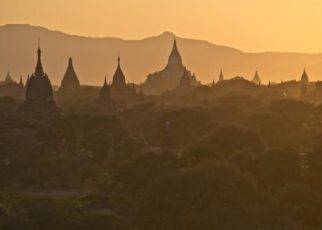The people at UNESCO World Heritage do a pretty fantastic job of assessing, inscribing and protecting natural and cultural heritage sites around the world, so that we – the people of this wonder-full world – can gain knowledge and inspiration from the humanity of the past, appreciate its value in the present and help protect our cultural and natural inheritance for the benefit of future generations.
Southeast Asian Cultural World Heritage
Those visiting Southeast Asia are in for a World Heritage treat! With numerous World Heritage sites in Cambodia, Indonesia, Lao, Malaysia and Thailand, inquisitive travellers are not only spoilt for choice, they will also find themselves on the doorstep of some of the most outstanding World Heritage on the planet. Visit one cultural site and a door into the fascinating world of Southeast Asia –past and present – will begin to creak open. Visit all ten cultural sites and begin to uncover the evolution of one of the most intricate and spellbinding cultural tapestries the world has ever known.
Southeast Asia’s Ancient Kingdoms
Central to the evolution of Southeast Asian culture, the Khmer Empire (9th-14th centuries) and the first Kingdom of Siam (13th-15th centuries) played the most significant roles in shaping the Southeast Asia of present day. The physical legacy of these two great kingdoms can be found at the famous UNESCO World Heritage sites of Angkor, in Cambodia (the ancient capital of the Khmer Kingdom) and at Sukhothai, the ancient capital of the first Kingdom of Siam. Here to assist visitors with a little background to these two monumental heritage sites is a brief historical introduction, that may just aid the curious explorer in opening the mind and letting the awe inspired imagination run wild.
Angkor, Cambodia
The Mother of all Southeast Asian World Heritage Sites, the Angkor region of Cambodia – situated in a vast area north of Tonle Sap (the Great Lake) – was the ancient hub for the hugely influential Khmer Empire. Thriving between the 9th and the 15th centuries, the ancient city supported a population of approximately 800,000 subjects who worshiped a succession of kings, self-appointed as emperors of the Hindu world.
The fact that Khmer kings were revered as gods was a key component in sustaining one of the greatest construction projects the world has ever seen. The city of Angkor was built during a 500 year period which produced over 1,000 Hindu and Mahayana Buddhist temples (many of which still stand today) and a very clever water system that maintained the population during the extremes of the monsoon and dry seasons. In addition to creating one of the most advanced city structures of its time, Angkor was also a regional power house whose art, religion, philosophy, architecture, social structure and language went on to influence a huge area of Southeast Asia.
At its zenith, the Khmer Empire’s supremacy spread from present day Burma (Mayanmar) in the west to present day Vietnam in the east, leaving in its wake a foundation of influences that have shaped the Southeast Asia of present day.
Ayutthaya and Sukhothai Thailand’s Old Capitals
Sukhothai, Thailand
Originally part of the Khmer dominated Kingdom of Lavo (present day north central Thailand), Sukhothai, the first traditionally accepted Kingdom of Thailand, was founded in 1238 when two Thai chieftains, Pho Khun Bang Klang Hao and Pho Khun Pha Muang , successfully fought khmer power in the area, pushing the Khmer Empire and its authority to the south. What remained was the first ‘Free Kingdom of Siam’, under the rule of the people’s choice of king, Sri Inthraditaya – the former Pho Khun Bang Klang Hao – whose son would later become one of the most remembered kings of Thailand, King Ramkhamhaeng the Great.
The most significant accomplishments of the Sukhothai Kingdom took place or were initiated under the rule of King Ramkhamhaeng, who reigned from 1279 to 1298. During his sovereignty King Ramkhamhaeng is credited with creating a kingdom of material, artistic and religious prosperity, attributed to by his endeavours to form a trading alliance with the Yuan Dynasty of China.
In addition to forming economic alliances, King Ramkhamhaeng introduced Ceylonese (Sri Lankan) Theravada Buddhism in a successful effort to purify the Khmer religious following of Mahayana Buddhism and Hinduism, thus forming the foundations for a religiously unified kingdom that would develop its own unique art and architecture.
With King Ramkhamhaeng’s cultural revolution in full swing, the city of Sukhothai and neighbouring towns became the centre for a creative explosion that resulted in the construction of hundreds of unique temples and structures that can still be viewed today. But, of all his achievements, King Ramkhamhaeng’s formulation of the Thai alphabet (which is disputed by some Southeast Asian historians) is rated by many as his greatest contribution in creating the foundation for a kingdom that has remained largely independent throughout history.





